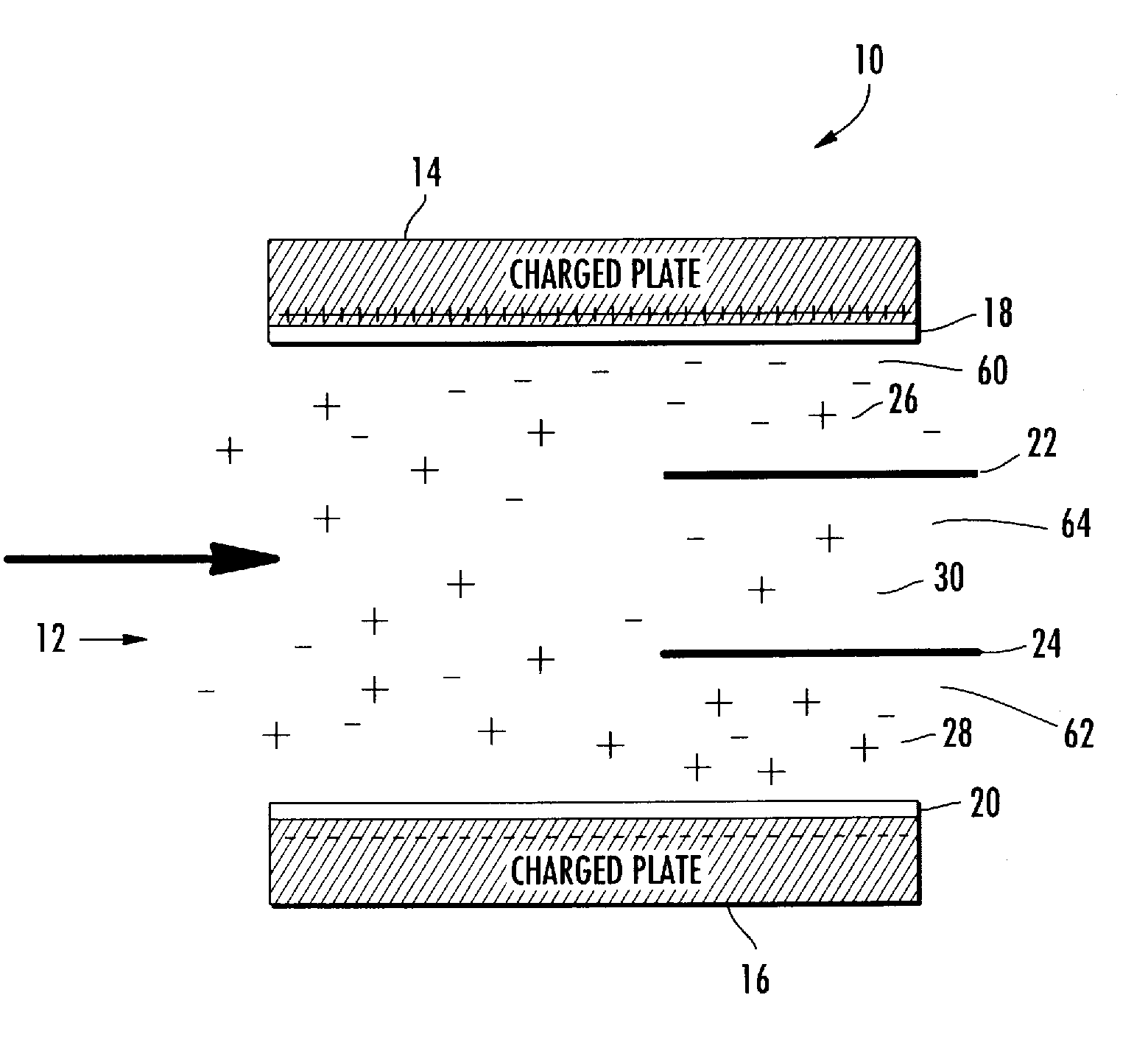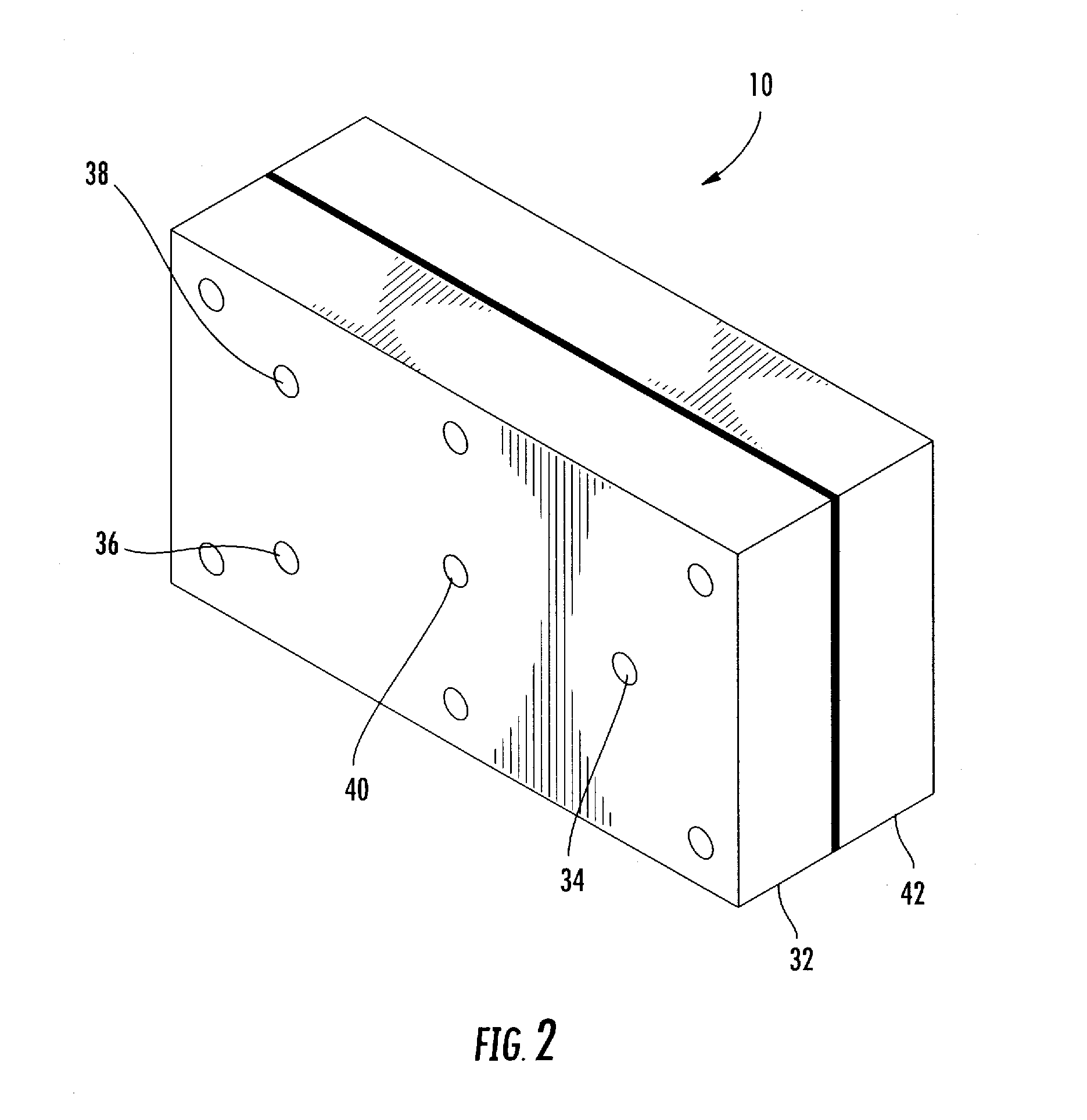Microscale capacitive deionization apparatus
a capacitive deionization and micro-scale technology, applied in the direction of fluid pressure measurement, liquid/fluent solid measurement, peptide measurement, etc., can solve the problems of low power consumption and very little energy required to achieve the effect of reducing the chance of electrical shock
- Summary
- Abstract
- Description
- Claims
- Application Information
AI Technical Summary
Benefits of technology
Problems solved by technology
Method used
Image
Examples
Embodiment Construction
[0059] While the present invention is susceptible of embodiment in various forms, there is shown in the drawings and will hereinafter be described a presently preferred, albeit non limiting, embodiment with the understanding that the present disclosure is to be considered an exemplification of the present invention and is not intended to limit the invention to the specific embodiments illustrated. Also, it is understood that the present invention is capable of removing ions from various fluids, in addition to water.
[0060] The basis operation of the present invention is illustrated in FIG. 1. The fluid or ionic fluid to be deionized is fed in the device 10 and flows down the main channel 12. The fluid stream passes between charged electrodes 14 and 16. The positive charged electrode 14 has a positive charge and attracts negative ions toward the upper portion of the fluid stream. The negative charge electrode 16 has a negative charge and attracts positive ions toward the lower portio...
PUM
| Property | Measurement | Unit |
|---|---|---|
| distance | aaaaa | aaaaa |
| voltages | aaaaa | aaaaa |
| voltages | aaaaa | aaaaa |
Abstract
Description
Claims
Application Information
 Login to View More
Login to View More - R&D
- Intellectual Property
- Life Sciences
- Materials
- Tech Scout
- Unparalleled Data Quality
- Higher Quality Content
- 60% Fewer Hallucinations
Browse by: Latest US Patents, China's latest patents, Technical Efficacy Thesaurus, Application Domain, Technology Topic, Popular Technical Reports.
© 2025 PatSnap. All rights reserved.Legal|Privacy policy|Modern Slavery Act Transparency Statement|Sitemap|About US| Contact US: help@patsnap.com



